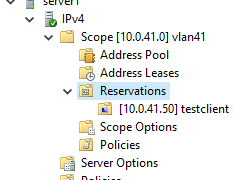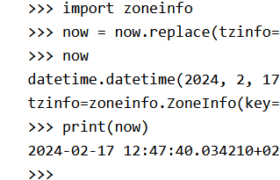One of the new features in Zabbix 7.0 LTS is proxy load balancing. As the documentation says: Proxy load balancing allows monitoring hosts by a proxy group with automated distribution of hosts between proxies and high proxy availability. If one proxy from the proxy group goes offline, its hosts will be immediately distributed among other […]
More Mocking with Pytest
In my Basic Mocking with Pytest post I showed simple cases. Now let’s do more mocking. First I’ll create the environment for my code: $ mkdir more-mocking$ cd more-mocking$ python3 -m venv venv$ . venv/bin/activate(venv)$ pip install -U pip wheel…Successfully installed pip-24.0 wheel-0.43.0(venv)$ pip install pynetbox pytest…Successfully installed certifi-2024.2.2 charset-normalizer-3.3.2 idna-3.7 iniconfig-2.0.0 packaging-23.2 pluggy-1.5.0 pynetbox-7.3.3 […]
PostgreSQL Upgrades on Debian Linux
When doing a major version upgrade on Debian Linux with PostgreSQL server installed (using Debian-provided packages), this always catches me: After the upgrade there will be two different PostgreSQL instances running, it won’t do an in-place upgrade for the database automatically. In order to get the existing database running on the newer PostgreSQL version, this […]
DHCP Reservations – Active or Inactive?
In DHCP servers you can configure IP address reservations, meaning that you statically configure the IP addresses that you want the specific DHCP clients to get. This is sometimes desirable when you know your devices and want to ensure that their DHCP-assigned IP addresses won’t change, because of, you know, reasons. (Printers may or may […]
NetBox Plugins to Present External Data
I have worked with NetBox for over five years now, and NetBox plugins feature has existed since version 2.8 in April 2020, but it was only recently that I got a need to start leveraging plugins to extend the NetBox functionalities. Most of the publicly available plugins work with Django model-based data that is saved […]
Commanding Devices with Tmux
Let’s go right away to the question: How do I enter commands on two devices at the same time? One of the possible answers is: With tmux. My usual workflow to connect to the end devices is from a Linux host that has tmux installed. The situation can look for example like this: Before being […]
Datetimes with Timezones in Python
First, let’s show how the commonly-used plain datetime.datetime.now() gets the local time but does not have a timezone: >>> import datetime >>> now = datetime.datetime.now() >>> type(now) <class ‘datetime.datetime’> >>> now datetime.datetime(2024, 2, 17, 12, 47, 40, 34210) >>> print(now) 2024-02-17 12:47:40.034210 >>> now.tzinfo is None True >>> Let’s add timezone to it, using the […]
Manpages for systemd
Because I seem to frequently search for these manpages: systemd versions in Debian Linux:
Compressed Data Between PowerShell and Python
I have built an application that transfers JSON data between remote PowerShell and Python components using Amazon SQS (Simple Queue Service). The size of the data is usually quite small, fitting nicely into the 256 KiB message size limit of SQS, letting me avoid complex multi-message handling or temporary S3 objects. In specific cases, however, […]
IKEv2 AES-256-GCM and SHA-384, what?
What has this SHA-384 to do with AES-256-GCM? I thought GCM contained integrity checks already, so why is SHA-384 there anyway? With AES-CBC (= non-GCM) in IKEv2 phase 1, you have to use an authentication (hashing) algorithm that ensures the integrity of the data exchange. Nowadays the common ones are SHA-256, SHA-384 and SHA-512. So, […]





